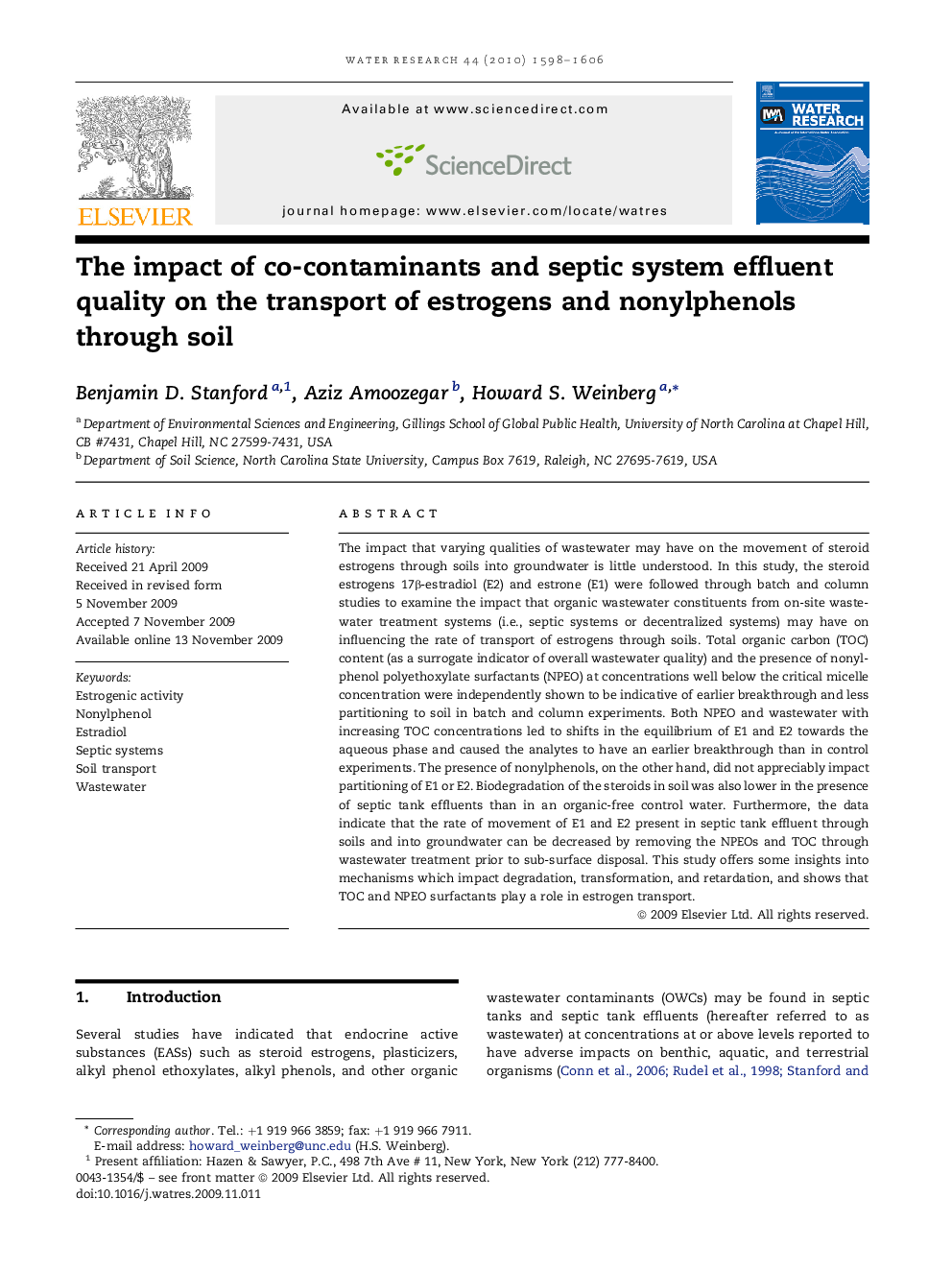| Article ID | Journal | Published Year | Pages | File Type |
|---|---|---|---|---|
| 4484297 | Water Research | 2010 | 9 Pages |
The impact that varying qualities of wastewater may have on the movement of steroid estrogens through soils into groundwater is little understood. In this study, the steroid estrogens 17β-estradiol (E2) and estrone (E1) were followed through batch and column studies to examine the impact that organic wastewater constituents from on-site wastewater treatment systems (i.e., septic systems or decentralized systems) may have on influencing the rate of transport of estrogens through soils. Total organic carbon (TOC) content (as a surrogate indicator of overall wastewater quality) and the presence of nonyl-phenol polyethoxylate surfactants (NPEO) at concentrations well below the critical micelle concentration were independently shown to be indicative of earlier breakthrough and less partitioning to soil in batch and column experiments. Both NPEO and wastewater with increasing TOC concentrations led to shifts in the equilibrium of E1 and E2 towards the aqueous phase and caused the analytes to have an earlier breakthrough than in control experiments. The presence of nonylphenols, on the other hand, did not appreciably impact partitioning of E1 or E2. Biodegradation of the steroids in soil was also lower in the presence of septic tank effluents than in an organic-free control water. Furthermore, the data indicate that the rate of movement of E1 and E2 present in septic tank effluent through soils and into groundwater can be decreased by removing the NPEOs and TOC through wastewater treatment prior to sub-surface disposal. This study offers some insights into mechanisms which impact degradation, transformation, and retardation, and shows that TOC and NPEO surfactants play a role in estrogen transport.
